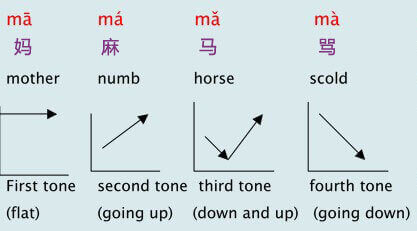How to learn Chinese Pinyin
But pinyin isn’t the Roman alphabet specifically, it’s something else entirely. So what’s the difference between pinyin and the Roman alphabet? How to learn Chinese? Specifically, why do we need to learn pinyin?
To those without any knowledge of the Chinese language, Pinyin can lead to a lot of errors and look very confusing. For those of you that also speak a Latin based language like Italian or Portuguese it may look familiar because of the accent marks. But don’t let that fool you into thinking you’ve got the grasps on it. In Chinese language there are many word combinations that can’t be found in most Western languages.
On top of that although it’s using a Roman alphabet base the letters do not have the same sound, an X doesn’t sound like an X in Chinese! If you don’t believe me why not get a translator out and type ‘Thanks’ and listen, the X sound turns into a Q. Because of this when learning Chinese using pinyin your very first step should be to learn how to read the alphabet the Chinese way. You can find tools online that will teach you how to read the alphabet the Chinese way. For example on Chinesepod where they will take you through the Chinese pinyin alphabet with sound clips so you can hear how it sounds.
Although this may seem like a waste of time it’s similar to learning how to do character strokes the right way, it’s an essential foundation to Chinese language learning. Think about it, as a kid what was one of the first few things you learnt as a precursor to reading and writing? The alphabet of course! So even though Chinese is a character based language you should learn the Chinese pinyin alphabet as a foundation. Only then can you move on to the second step, which involves tones.
In regards to tones, you can’t really compare to it western languages as they us intonations not tones. But don’t worry Tones aren’t that hard once you have the grasp of the basics.
So lets start easy, Chinese has 4 tones (5 if you count the silent tone), as an example the word ‘ma’ in pinyin can have 5 different meanings depending on what tone you use. Whereas in English words are spelled based on phonics and regional accents and intonation like Chinese tones are used as an expression. This is not the case in China. If you misread a tone it changes the sentence completely you can go from ‘riding a horse’ (qi(2)ma(3) 骑马) to ‘riding a mother’ (qi(2)ma(1) 骑妈). Here’s an example of what each tone means and how to say the tones using ma as an example:
- ma1 or mā (first tone)
Imagine this as a high level tone as if you were singing ans asked to sing a note for a few seconds.
- ma2 or má (second tone)
This one is simple, it’s a rising tone just imagine you are asking a question.
- ma3 or mǎ (third tone)
This tone is a bit like a wave it’s a falling and rising tone.
- ma4 or mà (fourth tone)

Possibly my favorite tone and the easiest for most foreigners to distinguish. It basically sounds like you are angry.
The fifth tone as mentioned before is silent.
There’s lots of recording tools and listening apps that can help you practice tones on your free time.
Comments
Post a Comment